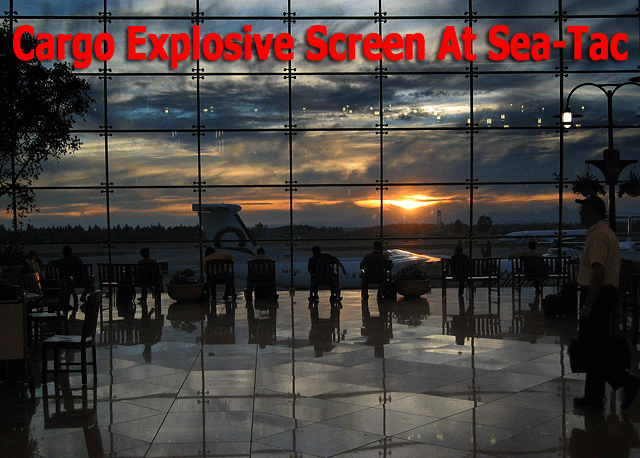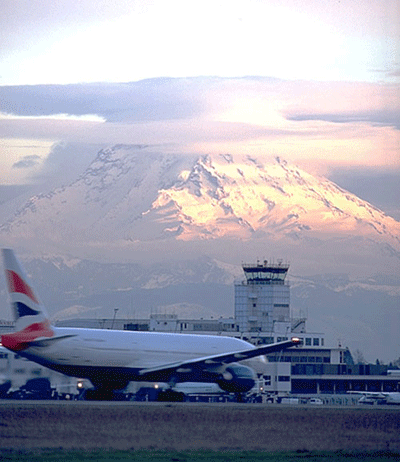
Having
been successfully piloted at San Francisco International Airport, a new
security initiative spearheaded by the Department of Homeland Security
will get underway at Seattle-Tacoma International Airport next.
 Known
as the Air Cargo Explosives Detection Pilot Program, the effort will be
conducted at Sea-Tac air cargo facilities under collaboration between
DHS’s Science and Technology (S&T) Directorate and the Transportation
Security Administration (TSA). Known
as the Air Cargo Explosives Detection Pilot Program, the effort will be
conducted at Sea-Tac air cargo facilities under collaboration between
DHS’s Science and Technology (S&T) Directorate and the Transportation
Security Administration (TSA).
The US$30 million cargo explosives screening
pilot program will later be expanded to other “as yet unannounced
“airports in the Midwest.
The cargo community in the San Francisco
Bay Area seems to have taken the beta-version of all of this in stride.
Many of the freight forwarders and major shippers here were hardly aware
that it was happening.
“If that’s all DHS is going
to do, more power to them,” said Francis Basconi, a flower shipper
in Burlingame, California. “We really did not feel any impact from
this at all.”
Other shippers said that they had read about
the heightened level of security, but were never touched personally by
the experience.
“We all saw something in the papers
about this,” said Irene Jackson, freight forwarder in San Mateo,
California.
“That’s about the extent of
it, though.
“We never lost a shipment or had one
delayed as a consequence.”
Approximately 64,000 metric tons of commercial
goods stored as belly cargo in aircraft calling in and out of Sea-Tac.
While no specific start date has been announced,
DHS spokesmen say the screening test program here will last until early
summer, 2007.
Other agencies involved in the Sea-Tac pilot
program will be the Lawrence Livermore National Laboratory; Oak Ridge
National Laboratory; Pacific Northwest National Laboratory and the New
Jersey-based Transportation Security Laboratory.
Air carriers, themselves, will also play
an active role in the congressionally mandated program.
The stated objective of the program is to
gain a better grip on the technological and operational issues associated
with explosives detection for air cargo.
But DHS spokesmen say that the Sea-Tac stage
will also concentrate on ”human cargo” smuggling.
Dogs will be utilized in this phase, as
will screeners armed with new technology to detect stowaways in cargo
containers.
Approximately 50% of all international air
cargo is carried on passenger aircraft, and industry analysts say screening
will be ramped up substantially in the coming years. Currently researchers
are also searching for a better way of determining the overall economic
impact such inspections will have on air commerce.
Besides the use of canine teams and manual
inspections, the systems and techniques now used for baggage screening
at SFO will also be deployed at Sea-Tac.
This includes “Explosive Detection
Systems,” “Explosive Trace Detectors,” and standard
X-ray machines, canine teams and manual inspections.
According to DHS spokesmen, data collected
through this program will allow the research team to check the accuracy
of computer models.
These models currently simulate the air
cargo screening process at Sea-Tac, and may be expanded to the entire
airport.
DHS’s Science and Technology (S&T)
Directorate includes what is called internally the “Countermeasures
Test Beds program,” designed to provide the agency with an independent
and objective testing capability.
This program provides information about
scientific, economic and operational issues associated with deploying
technologies.
Additionally, the program provides data
to decision-makers as to which technologies are suitable for different
missions.
(Patrick Burnson)
|



